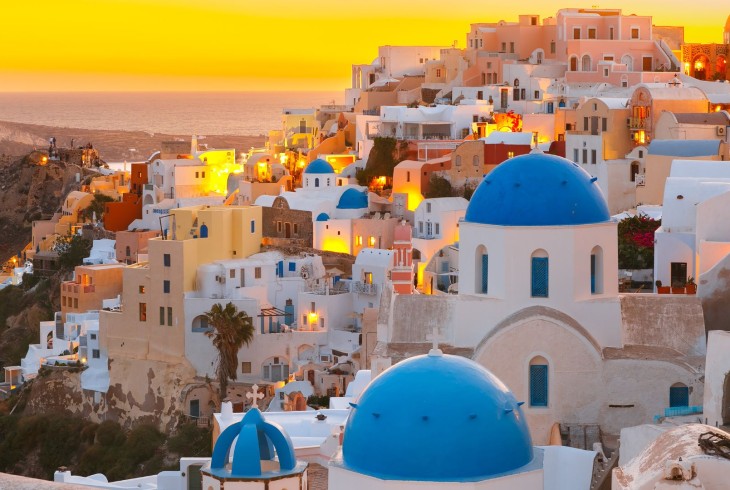Everyone can recognize Paris’s beige Champs Elysees, Greece’s blue and white houses, and New York City’s gray and glass skyscrapers. But did you know there are intentional reasons for these colors?
Find out below

City planning dates back to the ancient world when basic survival needs were the priority. Cities formed along waterways and served as connection points for trade routes. Design features, including color, were picked to improve life and/ make a statement. In the old city of Jerusalem (built in 1234) large light colored stones were used to help offset the hot desert temperatures. Stones are naturally cool and the color reflects the sun rather than absorbing its heat. In – used to exude power and wealth.
Modern day cities are designed with similar principles in mind.

Paris – While the Eiffel Tower remains Paris’s most iconic piece of architecture, its limestone clad buildings set along the ancient cobblestone streets is a close second. Recognized on postcards all over the world, Champs Elysees, originally laid in 1667 is the most famous of these streets. The historical significance of the limestone dates back to the mid 19th century. In 1853, under strong criticism, Emperor Napoleon III directed architect Georges-Eugène Haussmann to begin major renovations in Paris. The limestone was a key part of Napoleon’s plan to homogeneous the look and feel of the city.

Greek Islands – Mykonos and Santorini are instantly recognizable because of the distinct whitewashed buildings and bright blue doors and roofs. Similar to Jerusalem, the whitewashed exterior walls are to avoid the unbearably hot interiors from developing due to heat absorption. The blue detail color became popular because it was the cheapest available paint color for local fishermen. During the 1967 dictatorship in Greece the colors became mandatory as a symbol of Greek nationalism. A few years later in 1974 the mandate was signed into law, Greek island homes must be painted in blue and white.



